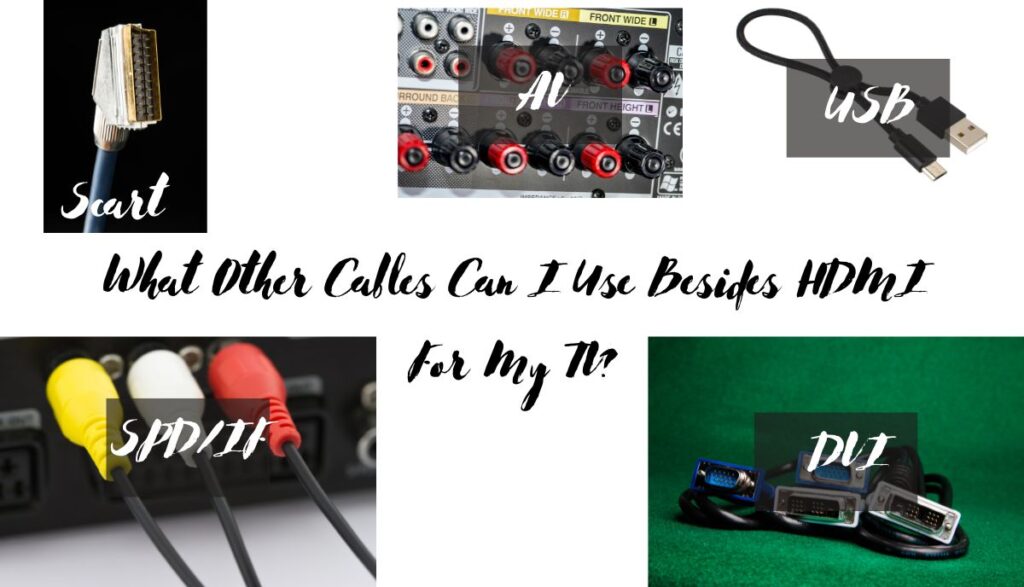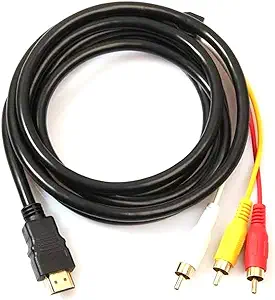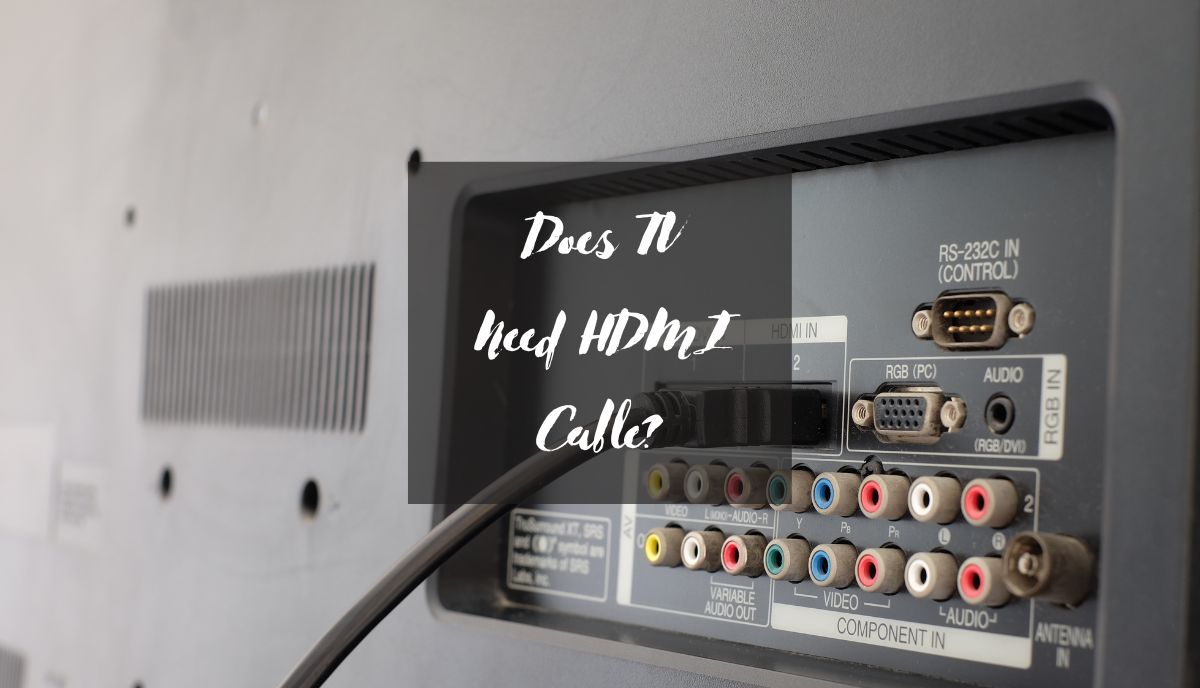Have you ever wondered why HDMI technology is so popular? First of all, those letters stand for ‘High Definition Multimedia Interface.’ Secondly, one cannot overstate the technology’s convenience.
Before HDMI came along, cable management was complicated because manufacturers used separate wires to transmit audio and video signals. Most of you spent your childhood years struggling to keep track of the banana cables that came with each source device, not to mention trying and failing to match each color to the correct port.
HDMI eliminated those challenges when it entered the market in the early 2000s. According to ViewPlaytek, the entities that introduced HDMI1.0 in 2001 wanted to create an AV connector compatible with technologies from the mid-90s (DVI).
Besides transporting uncompressed audio and video through the same cable, HDMI’s founders wanted to provide multi-channel audio support. The DLNA (Digital Living Network Alliance) embraced the digital standard immediately, paving the way for HDMI’s dominance.
Surprisingly, the cable’s connector has remained essentially unchanged since its inception. Consider the CIE Group’s picture of the different HDMI connectors. You have:
- Type A – The standard connector present in most audio-visual equipment, including gaming consoles, TVs, and computers (13.9 X 4.45mm plug size)
- Type C – The mini HDMI connector is comparable in appearance to Type A but smaller. It is found in DSLR cameras, tablets, and other portable devices (10.42 X 2.42mm plug size).
- Type D – The micro HDMI connector is smaller than type C and found in compact devices such as smartphones (5.83 X 2.20mm plug size).
Why do these connector types matter? Because they show that HDMI cables are compatible with every electronic audio/visual device on the market. This explains the popularity of the technology.
HDMI ports appear in every modern TV because manufacturers want to bridge the gap between their products and other electronic devices. They want to give consumers the option of connecting their TVs to desktops, laptops, projectors, consoles, and more using the same cable type.
Does that mean every TV needs an HDMI cable? Not necessarily. You have three scenarios that many people rarely consider:
- Some TVs don’t have HDMI ports. They were made before HDMI became a common digital standard. A TV without an HDMI port doesn’t need a HDMI cable.
- Like TVs, some source devices don’t have HDMI ports. Therefore, they have no use for HDMI cables.
- Some TVs and source devices offer ports for different cable types. You can buy and apply any cable type and connector that suits you.
What Other Cables Can I Use Besides HDMI For My TV?

HDMI is not the only connection option for your TV. If you check the back, you will find ports and jacks that accommodate one or more of the following:
1). SCART
The SCART lead has many names. French consumers call it Peritel. In Spain, retailers use ‘Euroconector.’ Terms like ‘EIA’ and ‘EuroAV’ are common in the US.
The 48-year-old technology carries everything from composite and RGB video to S-video signals, stereo audio input and output, and more. SCART lost its appeal when HDMI entered the picture.
2). AV
Component and composite video cables appear in older gaming consoles, DVD players, Blu-ray players, and set-top boxes. Component cables consist of five lines. Three of them are red, blue, and green. They transmit video signals. Two lines are for audio.
Composite cables have three lines. Of the yellow, white, and red wires, one works with the video signal. The other two work with the audio.
3). USB
A TV’s USB cable works the same way as a USB cable in every other setting. It can connect the TV to other devices with USB ports, such as computers and smartphones.
4). SPD/IF
This digital audio output technology is not a typical TV cable type. Instead of transmitting audio and video signals, the cable type boosts a TV’s audio by connecting the device to an external sound system, such as a home theater setup. An HDMI cable will achieve the same objective, assuming the TV and home theater system possess HDMI ports.
5). DVI and VGA
DVI and VGA are similar. They transmit video signals from a source device to a TV. However, VGA will only carry analog signals. On the other hand, DVI supports both analog and digital signals.
DVI is a newer invention than VGA, which is why it delivers sharper images. Before anyone tempts you to replace HDMI TVs with their DVI and VGA counterparts, you should know that DVI and VGA can only transmit video signals. They don’t support audio.
If you’re determined to use DVI or VGA, you need a separate cable for audio. This is why HDMI is superior. It transmits both video and audio signals.
How To Connect A TV Without HDMI Ports?
Some TV models are ancient. They don’t have HDMI ports. What do you do when the source device requires an HDMI connection? You can apply one or more of the following solutions:
1). HDMI/AV Converter
If your TV uses AV inputs, a converter will turn the HDMI output from the source device into AV signals that your TV can understand.
2). VGA/HDMI Adapter
If your TV uses VGA connections, an HDMI cable will run from the HDMI port on the source device to the VGA/HDMI adapter’s HDMI input port. A VGA cable runs from the converter to the TV’s VGA input port.
3). DVI/HDMI Converter
The HDMI cable runs from the source device’s HDMI port to the DVI/HDMI adapter. A DVI cable runs from the converter to the TV’s DVI input port.
You can find adapters and converters that bridge the gap between an HDMI port on the source device and the TV’s unique audio and video connections.
Can I Use Older TVs Without HDMI For Modern Devices?
Yes, you can, but you need an adapter with an HDMI input. The HDMI cable from the source device will connect to the adapter. Another cable will run from the adapter to the TV. The adapter should match the TV’s connection type.
What To Do If My TV Doesn’t Have HDMI Ports?
You can upgrade the TV. However, this isn’t always an option. Some TVs are too old to accommodate new ports and circuit boards. Additionally, the expense isn’t worth it, especially if the upgrade compels you to buy a new mainboard. You might as well buy a newer TV with an HDMI port.

Although, an adapter is much cheaper. Adapters have HDMI inputs and outputs that match your TV’s audio/video connection. Some manufacturers make distinct adapters for their oldest models. Others offer free or cheap upgrades.
How To Stream Content On A TV Without HDMI?
You don’t need HDMI to stream content on a TV. You can access streaming content by installing streaming platforms such as Netflix. Therefore, the only requirement is a stable internet connection, which you can acquire through an ethernet cable.

